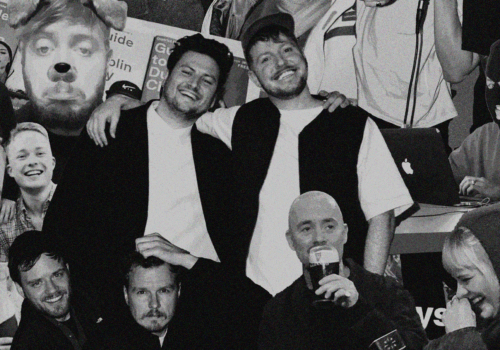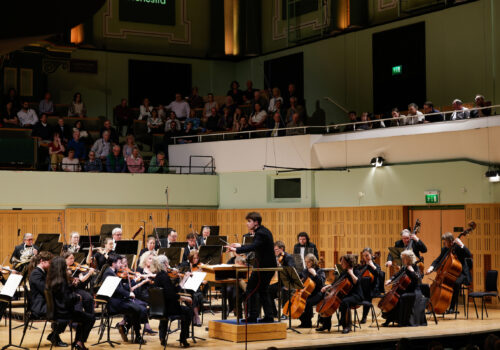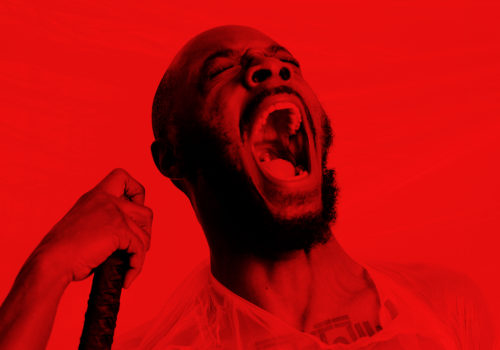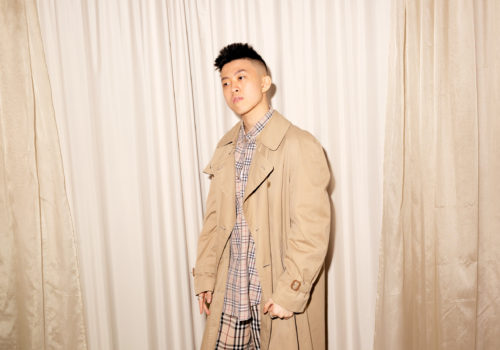The Irish Film Depicting Grief’s Complicated Legacy
Text: Izzy Copestake
Imagery: Lost and Found
Ellius Grace and Brian Bowe’s short film Lost and Found, reaches a hand through a sea of grief, clutching at precious memories now slipping away and suffocated by loss. The plot follows a young girl, played by Hazel Doupe, as she embarks on the seemingly impossible step forwards following the death of her brother. In Lost and Found, grief is depicted in its most raw state; choking and lonely, with the power to utterly transform a world you think you once knew. Yet in its closing moments, Grace and Bowe’s powerful debut balances the pain of loss with the heavy joy of reflection with loved ones, and a hope which keeps burning long after the film is over.
After loosing a close friend, Ellius Grace and Brian Bowe started writing the script of Lost and Found as a way of working through their experiences of loss. The short film documents the space left, emotionally and physically, after the loss of a loved one, and all the objects and associations which come to represent their absence. Lost and Found will be premiering at the Dublin International Film Festival on February 26 in the Light House Cinema. We chatted to writer and director Ellius Grace about the upcoming film.
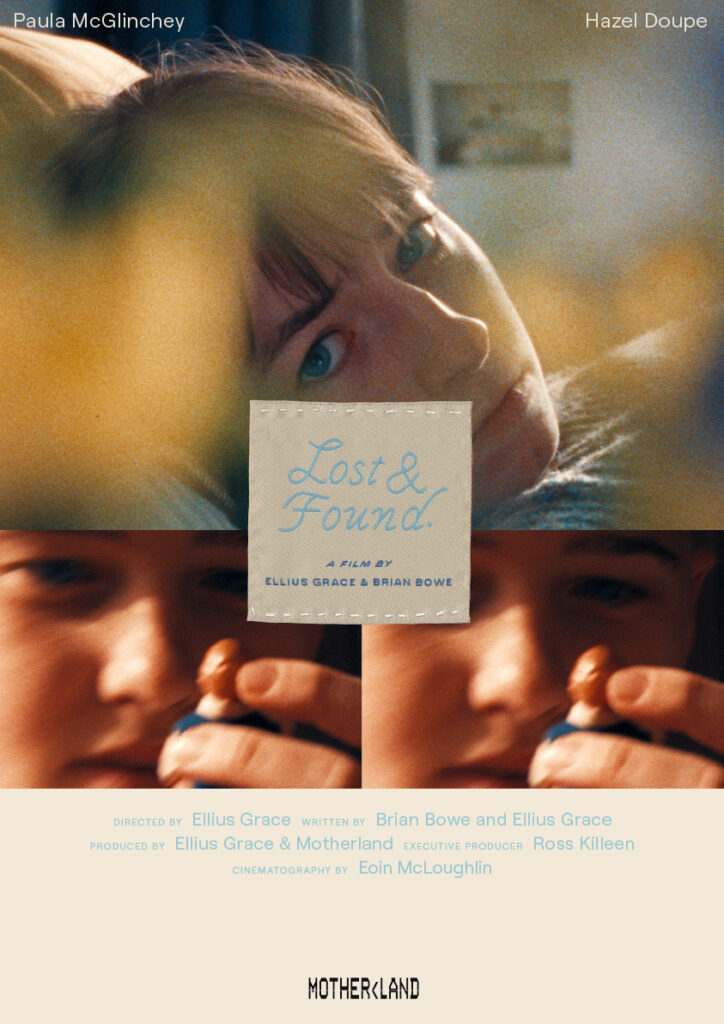
Tell me a little bit about your artistic background
All my work is very people focused. It’s about human stories, real emotions and real things – but elevated, in a way, through directing and visuals. I’m also mixed race, my mum is Malaysian Chinese. So I have maybe had a different experience growing up in Ireland. I think it definitely does sort of change the way I see things and how I approach things. Lost and Found is showing on the 26th of February at Dublin International Film Festival. As a premier, it’s really nice to be in Dublin because loads of us are from here. It was made and written here. It’s about somebody who’s from here.
This is such a moving depiction of the life altering reality grief, how did you come up with the idea for this piece?
Well, the idea came to us. Brian and I met years ago when we were in school through our friend Connor, and who passed away eventually. Back then, Brian and I were never friends properly, but we always knew that we kind of liked all of the same things that were into the same films and stuff like that. In 2022 our friend Connor passed away, it’s obviously of one of the bigger losses that a lot of us maybe had experienced.
“It was almost like therapy in a way, talking to each other.”
So myself and Brian, at the very end of the funeral, reconnected. We were literally leaving the pub at like 3am, and I was like: Brian, we need to be friends. So, we got in touch, and we started going to the cinema together. Later that year, I had the idea to write a piece that wasn’t necessarily about our friend, but it was about our experiences. We just met up a few times, and started just to talk about images and ideas and the experience and maybe even what the family must have gone through. We decided to write a fiction piece about loss within a family. It’s very much inspired or informed by all of our feelings, and all of our experiences. Just trying to kind of dig into that time, and excavate it in some way and come out with something. It was almost like therapy in a way, talking to each other. So the idea came from our own experiences, and kind of extrapolating it from that, and sort of making something that spoke to the emotions and the feelings and the experiences in a more general way. I think it’s stronger almost, to make it a little bit less personal, a little bit more universal. It can then, hopefully, speak to other people who had similar experiences, or give them some kind of catharsis.
What aspects of grief were important to depict?
I think the thing with grief is that it doesn’t really stop. You just learn to live with it. And it sort of becomes contextualised into your life. I’ve seen a description of it as a jar of sand. You are the jar and the sand is the grief. The sand doesn’t go away, but the jar gets bigger. The sand will always still be there, but the jar just gets added with other things and you grow. The grief never diminishes, but you grow around it. And I think that’s how it gets easier in some ways, it doesn’t feel like it’s as much of your whole being as it might have been before.
“The grief never diminishes, but you grow around it.”
We were trying to illustrate the, those times immediately afterwards. You end up maybe living in the land of the dead for a while, if you hang on to it too long. I think it’s important to hang on to it, but then also important to remain in the land of the living with other people. And you know, and to remember the person you’ve lost with other people. That’s the idea of the film, if there’s any solution, it’s returning to life, and the people who are there. When when somebody goes away, they carry on through the connections that they have created with other people. For example, people like myself and Brian, who became friends, and wouldn’t have known each other if it wasn’t for our friend.

There’s a real sense of the act of remembering in an equally painful and joyful way in Lost and Found, how did you maintain this balance?
Nostalgia is a mix of happiness and sadness, and I guess, grief has a certain nostalgia to it, because that’s what you’re holding on to; the joy. But there’s also the pain of the present, as well remembering the bad times when the person who’s alive too. We’re trying to strike a balance between what might have been a memory, but also trying to make create the feelings of being suffocated or trapped. The shots just felt right. And that’s also down to the actors. We did a few exercises of just like, take, take, take a laugh and bring it to a cry. And they are able to do it with subtlety.
“grief has a certain nostalgia to it, because that’s what you’re holding on to; the joy.”
You spoke you spoke there about suffocation. I think in the film, you get the feeling that the setting plays such an important role in this suffocation. Where did you shoot this?
We shot in a house across the road from where I grew up, and my parents still live on the same street. It’s strange, because when I when I was sort of putting together some of the geography of where things were happening in the house, I had sort of inadvertently imagined things in my childhood home because in my head already. Then we ended up finding out that our old neighbour had passed away in the last few years herself, and the house then was up for sale. One day my my mother said, “Why don’t you ask the family if they’d let you shoot in their house while it’s still for sale?” And I went, Oh, that’s ridiculous. That’ll never work.
It’s perfect because it’s a mirror image of the house that I had imagined the film in and, and it looked like it had come straight out of the 70s or 80s. Plus it was quite empty. So it turned out to be the perfect location. I got in touch with her son and the family were very happy to let us shoot there. It was a like incredibly realistic for a house that feels lost in time. Now the house is being renovated, I think or it’s definitely being redecorated and everything. So it almost felt like a bit of a record of the place itself, which was quite nice to be able to do. It became doubly personal, you know?
“The whole film is about those objects, or those things that become important when somebody passes.”
The use of props was interesting. How did you how did you decide which ones to use?
I think it was a balance of getting older looking props, while mixing them with newer ones. We wanted the film to have no particular time.We’re not doing a period piece, we’re doing something that feels nostalgic. It was important to create a balance of different time periods as well. But at the end of the day, it was about the texture of everything, how real it felt. The whole film is about those objects, or those things that become important when somebody passes. It could be anything that maybe didn’t matter before, but when the person passes it has this significance to them, it takes on the meaning or the the soul of that person in a way. So I guess was really important to find that one prop.

What do you hope the audience might take away from this?
It’s an experience, it’s something to watch and to sit inside of, to sort of pick apart you know? But like any good piece of art, theres the hope that somebody can bring their own experiences to it, or have empathy, or open people’s eyes to the experiences of others. And hopefully, a positive message to end with that sort of creates positive energy.
